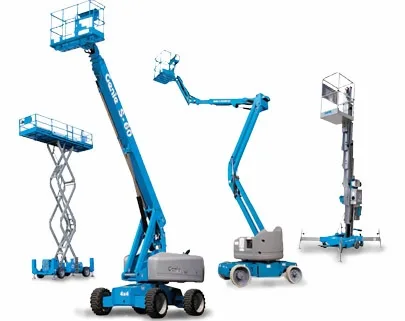Access to equipment is pivotal in industrial settings, where safety, efficiency, and productivity are paramount. Industrial environments often involve complex machinery, elevated workspaces, and challenging terrain, making access equipment essential for tasks ranging from maintenance and inspection to construction and material handling. This guide will explore various types of access equipment commonly used in industrial settings, their applications, safety considerations, and business benefits.
Types of Access Equipment
- Scissor Lifts: Scissor lifts are versatile and widely used in industrial settings. These hydraulic platforms provide stable vertical access and are suitable for maintenance, repairs, and installation tasks. They come in various sizes to accommodate different heights and load capacities.
- Boom Lifts: Boom lifts are ideal for reaching elevated areas more flexibly. They are equipped with extendable booms that can move both horizontally and vertically. These lifts are commonly used for tasks that require access over obstacles or in hard-to-reach locations.
- Aerial Work Platforms (AWPs): AWPs encompass various platforms providing elevated access. These include articulating boom lifts, telescopic boom lifts, and scissor lifts. They are suitable for building maintenance, window cleaning, and overhead installations.
- Cranes: Industrial cranes lift and transport heavy loads in factories and construction sites. Overhead, gantry, and jib cranes are just a few examples. They enhance productivity and efficiency when handling materials and equipment.
- Scaffolding: Scaffolding systems are temporary structures erected to access elevated work areas. They are common in construction, shipbuilding, and maintenance work. Proper assembly and adherence to safety protocols are crucial for scaffolding use.
- Forklifts: Forklifts are essential for material handling in warehouses and manufacturing facilities. They come in various configurations, such as counterbalance forklifts, reach trucks, and order pickers, each designed for specific tasks.
- Modular Access Platforms: These platforms are designed with interchangeable components, allowing customized configurations to meet specific access requirements. Their ease of installation and reconfiguration makes them valuable assets for enhancing worker safety and efficiency. Whether providing access to elevated machinery or creating safe walkways in industrial facilities, modular access platforms offer flexibility and convenience, contributing to streamlined operations and improved safety standards.
Applications and Benefits
Access equipment is used in various industrial applications to enhance safety and efficiency:
- Maintenance and Repairs: Regular equipment maintenance is vital in industrial settings. Access equipment like scissors and boom lifts enable workers to reach machinery and structures for inspections, repairs, and preventive care.
- Construction: Industrial construction projects rely on access equipment for tasks like steel erection, concrete pouring, and welding. Boom lifts, cranes, and scaffolding are essential for reaching various heights and navigating construction sites.
- Material Handling: Forklifts and cranes are indispensable for material transport within factories and warehouses. They streamline operations, reduce manual labor, and enhance safety when moving heavy loads.
- Warehousing: In large warehouses, access equipment such as order pickers and forklifts help workers reach products on high shelves quickly and safely, improving inventory management and order fulfillment.
Safety Considerations
Safety is paramount when using access equipment in industrial settings. Here are some key considerations:
- Operator Training: Ensure operators are properly trained and certified to use the equipment. This includes understanding the equipment’s controls, maintenance, and emergency procedures.
- Regular Maintenance: Conduct routine inspections and maintenance to ensure the equipment remains in optimal working condition. This minimizes the risk of breakdowns or accidents.
- Proper PPE: Workers should wear appropriate personal protective equipment (PPE), such as helmets, harnesses, and safety goggles, based on the type of equipment and the nature of the task.
- Load Capacity: Do not exceed the equipment’s load capacity. Overloading can lead to equipment failure and accidents.
- Site Assessment: Evaluate the worksite to identify potential hazards and obstacles affecting equipment operation. Clear obstructions, mark hazardous areas, and establish safety zones.
Access equipment is a cornerstone of industrial operations, facilitating efficient work in challenging environments. Understanding the various types of access equipment, their applications, and safety considerations is essential for businesses to maximize productivity and protect the well-being of their workers. Access equipment can help industries thrive when used correctly, ensuring that maintenance, construction, material handling, and other tasks are carried out with precision, efficiency, and safety at the forefront.



